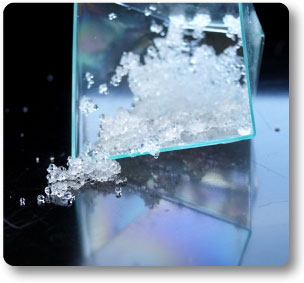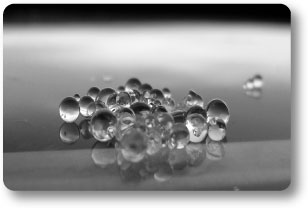Hydrogels are hydrophilic polymer networks that are able to swell and retain large amounts of water and maintain their three-dimensional structures. The term Hydrogel is used at the same time for the dry substance and for the water charged gel. These polymers do not dissolve in water; upon swelling, they increase in volume, but keep their shape without breaking up. Hydrogels could be divided into Super Absorbent Polymer (SAPs) and Super Porous Hydrogels (SPHs). In general, the amount of water absorbed by the hydrogel is at least 20% of its total weight,, but SAPs are able to absorb large amount of liquid, up to 200%. The Super Porous Hydrogel, instead, is a 3-dimensional network of polymer that absorbs a large amount of water (up to 400%) in a very short period of time, due to the presence of interconnected microscopic pores.
Responsive hydrogels can reversibly change volume in response to slight changes in the properties of the medium including pH, temperature, electric field, ionic strength, salt type, solvent, external stress, or light.
Responsive hydrogels found many different applications because of their interesting properties: as a super absorbent material in diaper, as insulator construction materials, as water retention material in agricultural applications, in showing to obtain the artificial snow, in cosmetic and pharmaceutics industry, in artificial organs and tissue engineering, in wound dressings and in fire protection. Most hydrogels are highly bio compatible and have extremely low toxicity to the human body, eg, hydrogel products such as contact lenses and surgical dressings are being used successfully.
Gze has used this material aslo in the garments thank's to the development of the Safe Hydrogel padding, a special textile structure born for safe Fire Resistant equipment (as Hydro Jacket)

